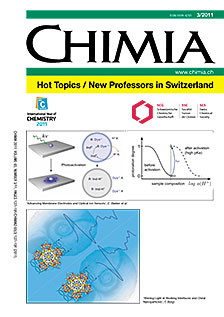Advancing Membrane Electrodes and Optical Ion Sensors
DOI:
https://doi.org/10.2533/chimia.2011.141Keywords:
Analytical chemistry, Chemical sensors, Membrane electrodes, Optodes, PotentiometryAbstract
While potentiometric sensors experienced a golden age in the 1970s that drove innovation and implementation in the clinical laboratory as sensors of choice, it has been only fairly recently that a theoretical understanding coupled with modern materials approaches transformed the area of membrane electrodes from a playful, yet empirical field to one firmly rooted in scientific understanding. This paper summarizes key progress in the field during the past two decades, emphasizing that the key impulses at the time originated from the emerging field of optical ion sensors. This simplified and transformed the underlying theory of their potentiometric membrane electrode counterparts, where subsequently substantial progress was made, including the realization of ultra-trace detection limits. The better understanding of zero-current ion fluxes and transport processes in turn allowed the development of approaches utilizing dynamic electrochemistry principles, thereby drastically expanding the field of membrane electrodes and making available a range of new methodologies that would have been difficult to predict only a few years ago. These significant developments are now starting to come back and influence the field of optical sensors, where the control and triggering of dynamic processes, away from simpler equilibrium principles, are becoming a highly promising field of research.Downloads
Published
2011-03-30
Issue
Section
Scientific Articles
License
Copyright (c) 2011 Swiss Chemical Society

This work is licensed under a Creative Commons Attribution-NonCommercial 4.0 International License.
How to Cite
[1]
Chimia 2011, 65, 141, DOI: 10.2533/chimia.2011.141.







